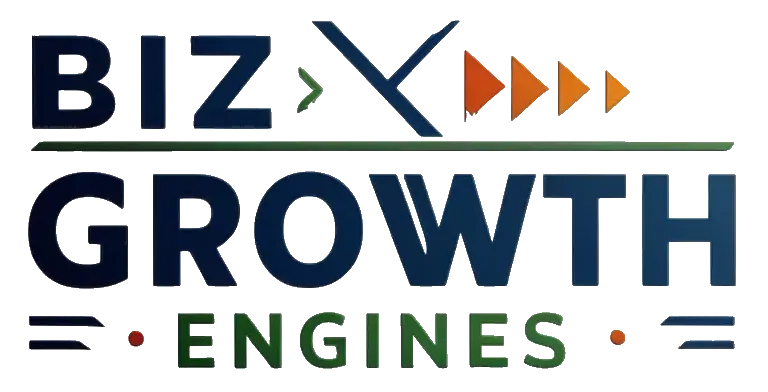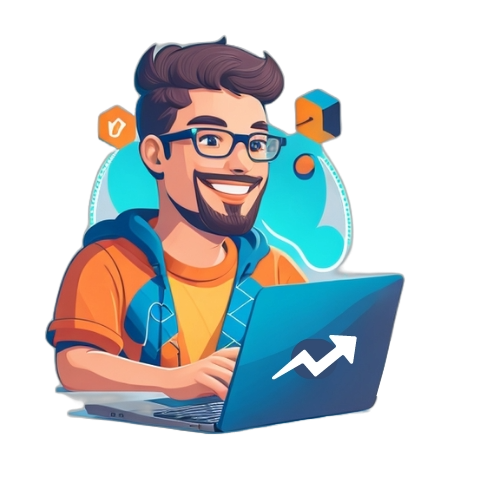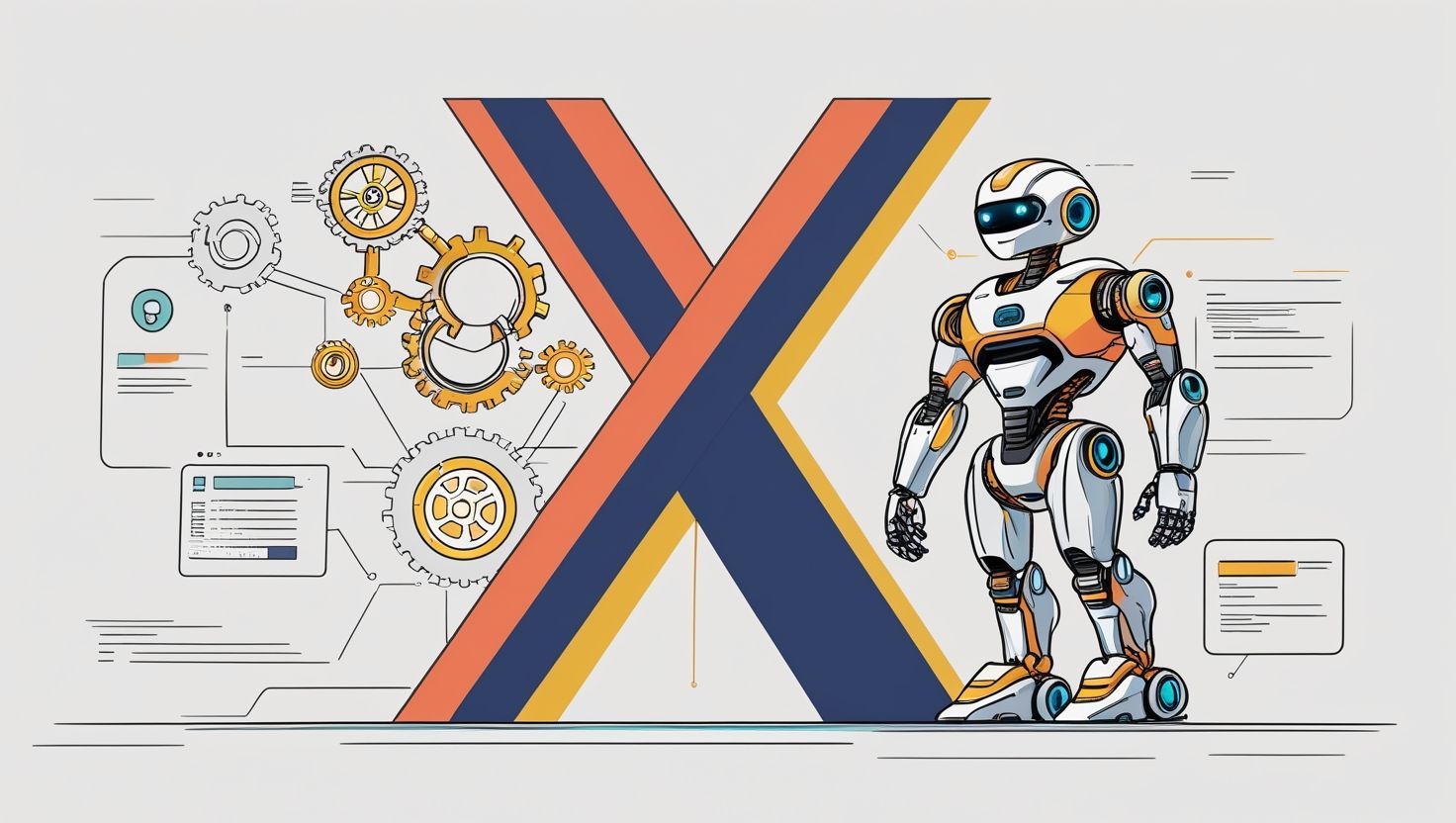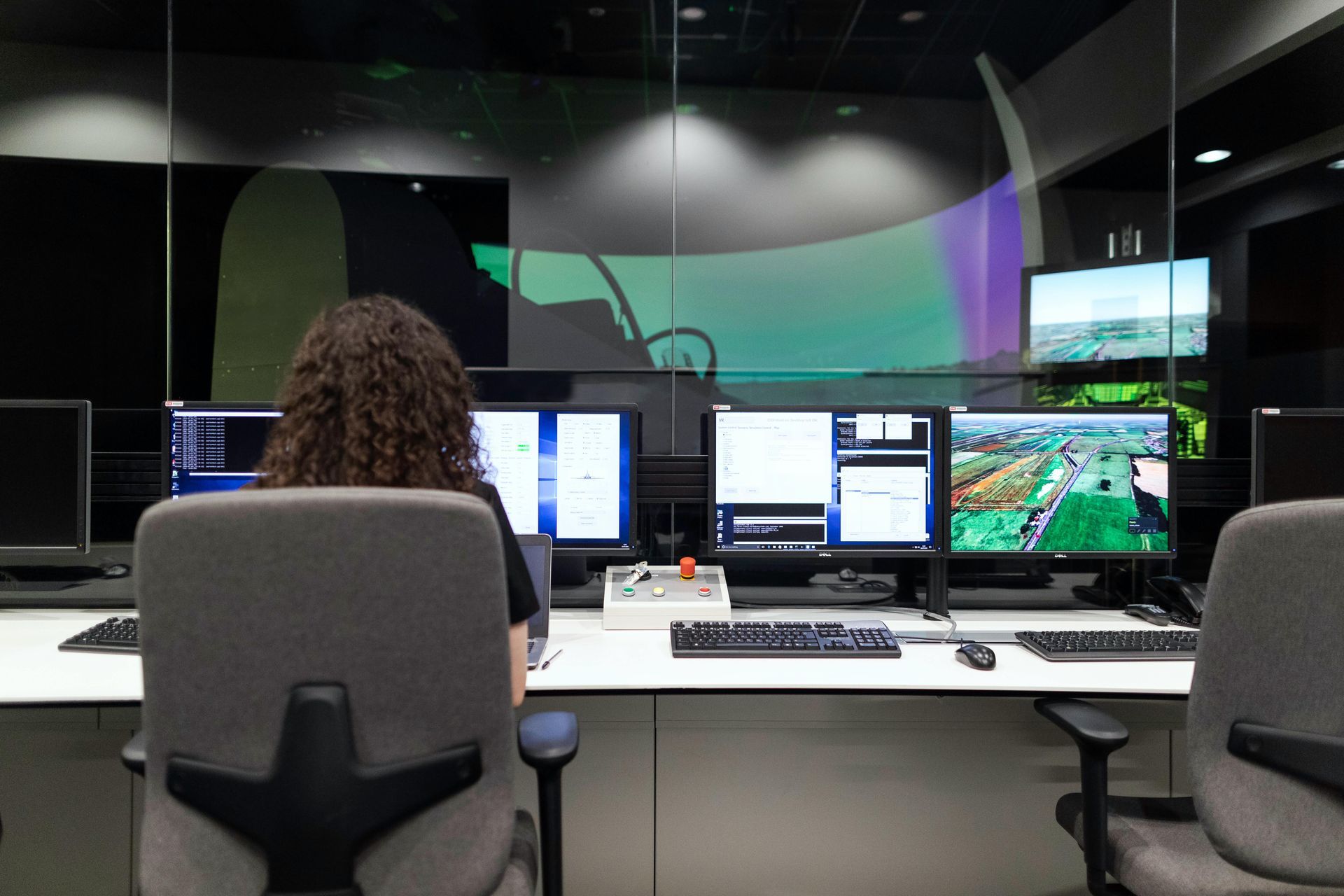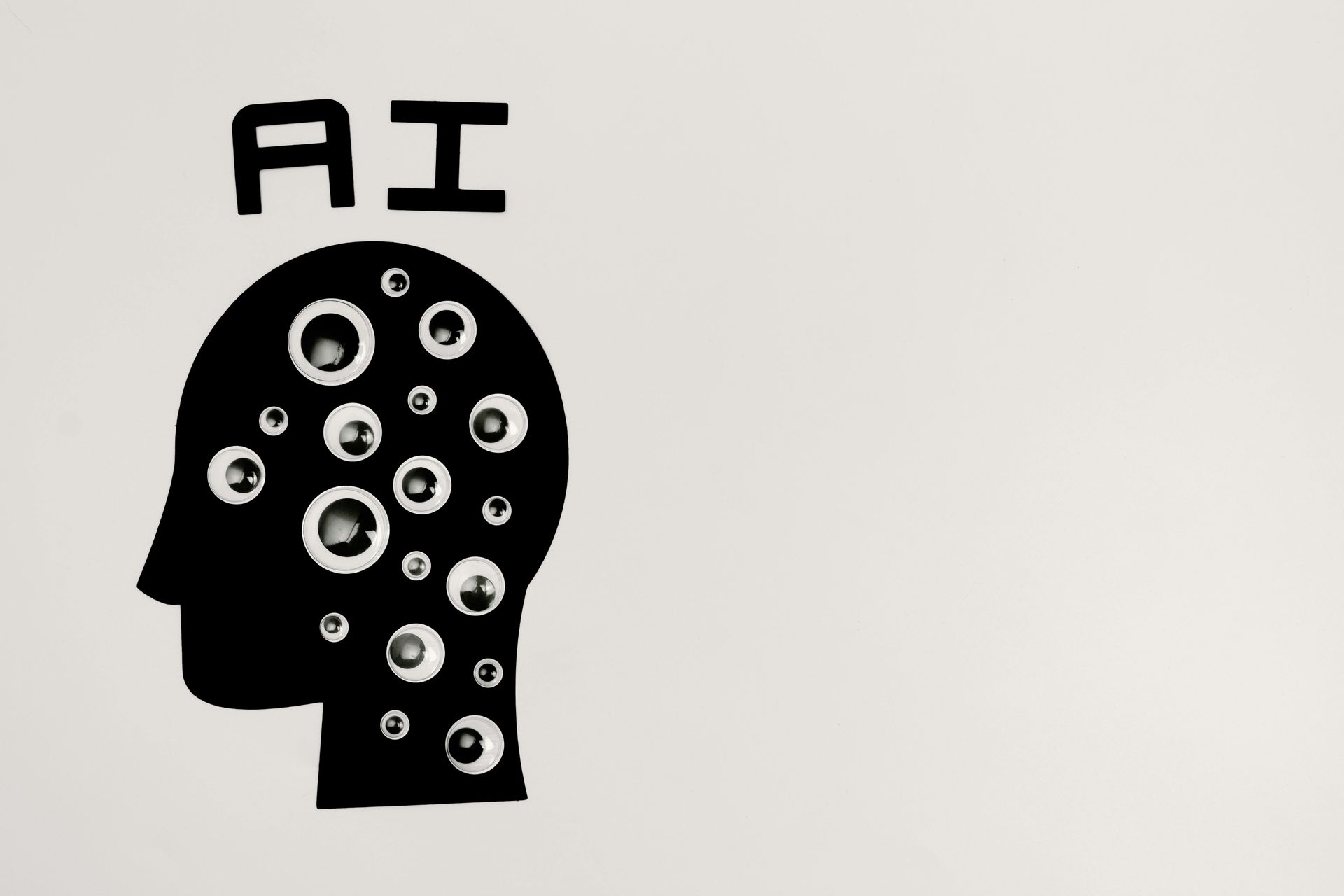How businesses can strategically combine automation and AI agents to drive efficiency and growth in 2025.
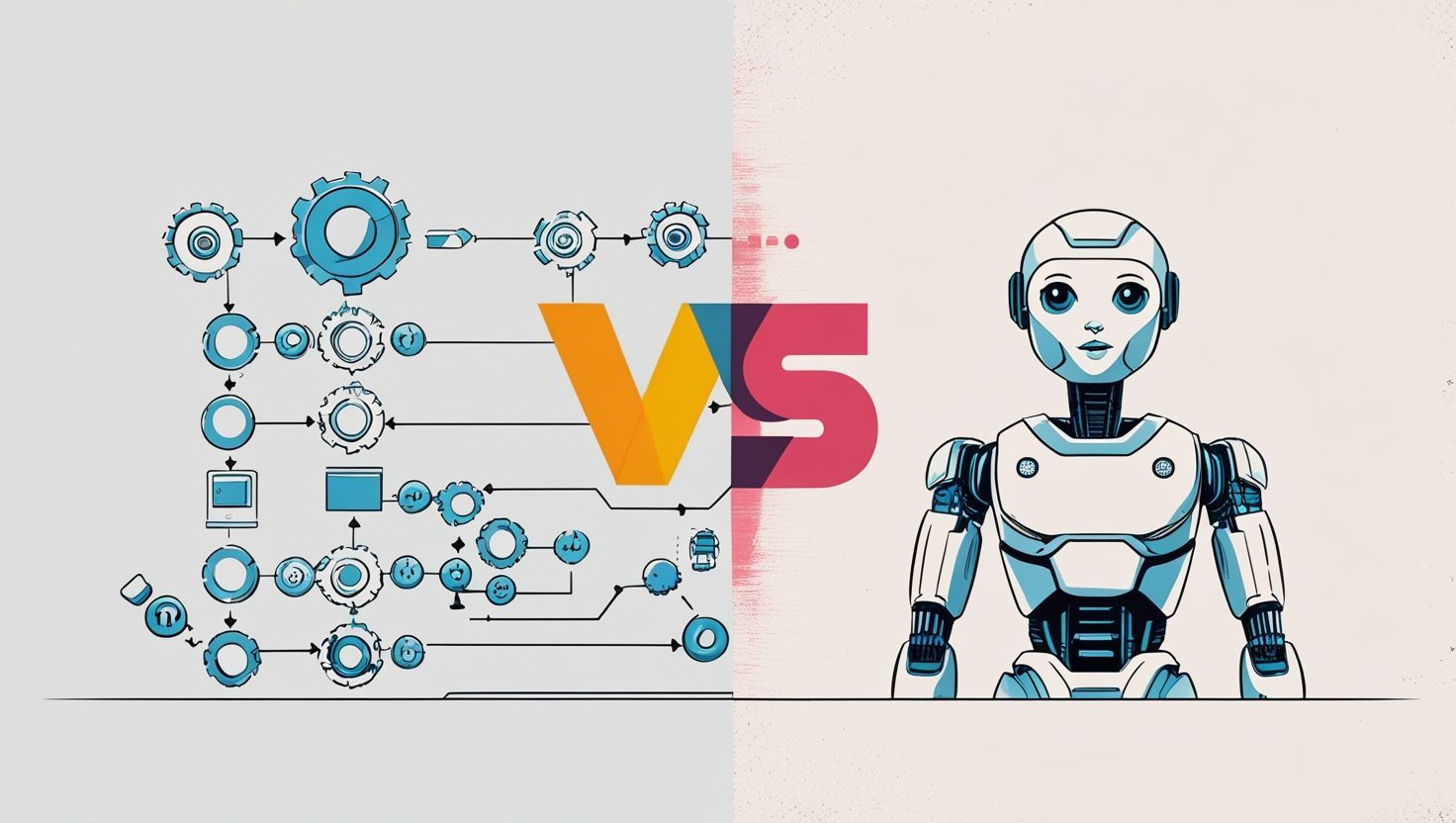
Let's be real - everyone's talking about AI these days. Business leaders often seek AI-driven automation but may not fully understand the difference between automated workflows and intelligent AI agents. You’ve probably been bombarded with terms like "AI automation," "intelligent agents," and countless other buzzwords.
It's probably overwhelming, but here's the thing: understanding the difference between basic automation and true AI agents isn't just tech talk - it's about knowing where to invest your money and time. Let's break this down in plain English.
Automated Workflows vs. AI Agents: What’s the Difference?
An automated workflow is a system designed to perform a series of predefined tasks without human intervention. These workflows are built using specific rules and logic tailored to handle particular processes efficiently. For example, an automated workflow might process customer orders by validating data, updating inventory, and sending confirmation emails. While these systems can operate independently, they lack the ability to adapt to new or unforeseen situations beyond their programming.
Think of automated workflows like a really efficient assembly line worker. They're great at doing the same thing over and over, exactly how they're programmed. Like when you get those automatic email confirmations after ordering something online - that's an automated workflow. They're reliable but pretty rigid.
In contrast, an AI agent is designed to mimic human decision-making by analyzing data, learning from experiences, and making choices based on real-time inputs. These agents can handle a variety of tasks, adapt to changing circumstances, and even predict future trends. For instance, a customer service AI agent can understand and respond to diverse customer inquiries, learning from each interaction to improve over time.
Think of AI agents as more like having a smart assistant who can think on their feet. They learn from experience and can handle curve balls. Take the latest customer service AIs - they actually understand what customers are asking and can have real conversations, not just spit out pre-written responses.
At a high level, both automated workflows and AI agents aim to improve efficiency and reduce manual effort, but they operate in fundamentally different ways.

Real-World Examples (2025 Edition)
Let me show you how this plays out in real businesses:
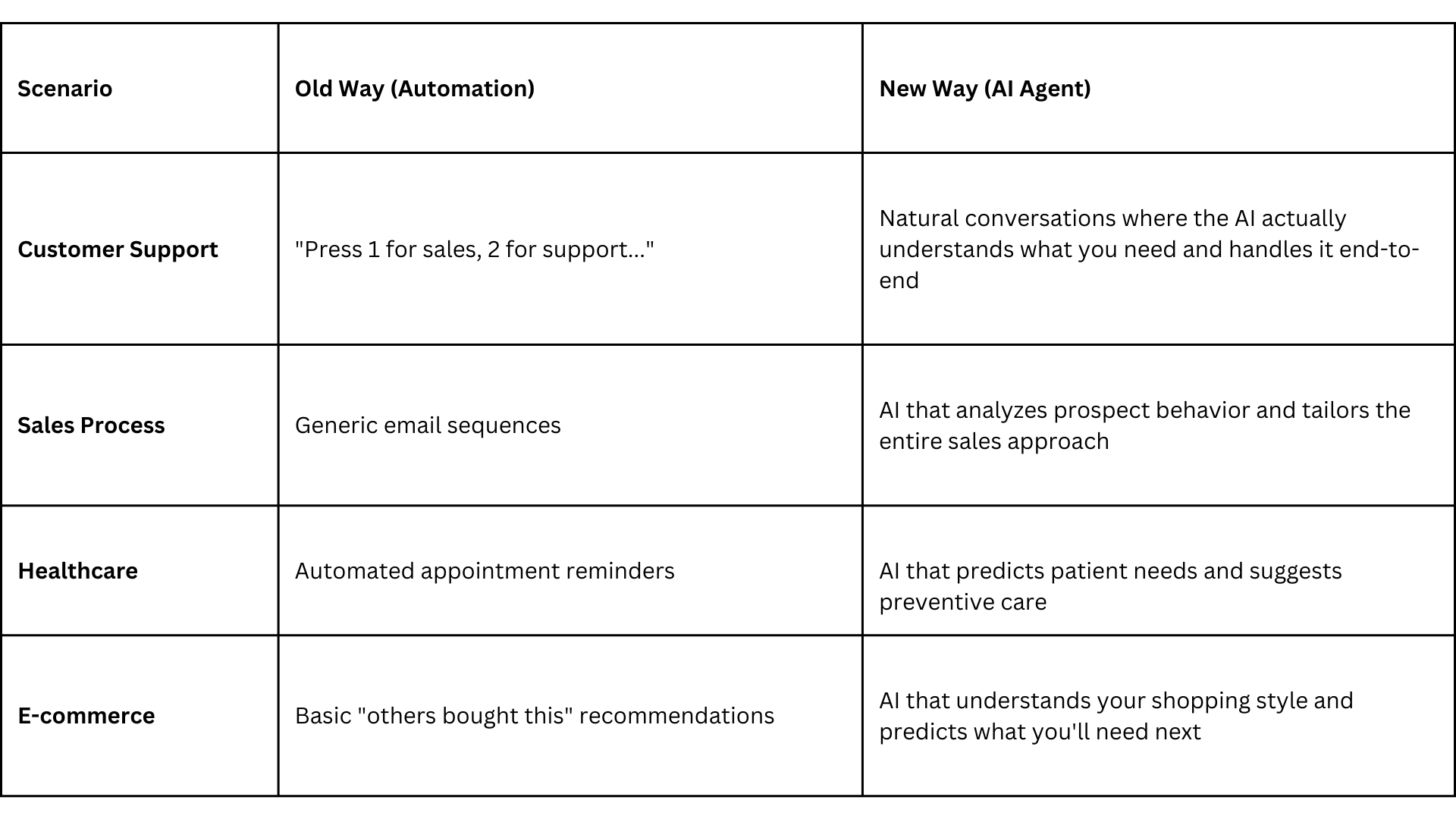
The Two Key Factors: Specificity and Autonomy
At a high level, both automated workflows and AI agents aim to improve efficiency and reduce manual effort, but they operate in fundamentally different ways. When deciding between automated workflows and AI agents, it's crucial to consider two main factors: specificity and autonomy. These are two extremely critical dimensions. Let’s try to understand it better:
Specificity refers to how focused a solution is. A system with high specificity is tailored to solve a particular problem, while one with low specificity can address a broad range of issues. Automated workflows typically exhibit high specificity, as they are designed for specific tasks. AI agents, however, aim for lower specificity, enabling them to handle various tasks across different domains.
- Vertical specificity: Solutions designed for one type of problem (e.g., an AI model trained specifically for fraud detection).
- Horizontal specificity: Solutions designed to handle multiple types of problems. (e.g., a general AI assistant for multiple business functions).
Autonomy refers to how independent the system is. Automated workflows follow a set sequence of steps and require reprogramming to handle new tasks. AI agents, on the other hand, can make decisions in real-time, adjusting their actions based on current data and situations.
- Predefined workflows: Execute tasks based on pre-set rules with little adaptability.
- Decision-making AI: Can choose actions dynamically based on context and data.
To sum it up:
- Automated workflows (e.g., RPA bots) have high specificity but low autonomy.
- AI agents (e.g., virtual assistants) aim for higher autonomy but can be less specific in their accuracy.
- When you're deciding what you need, think about these two things:
Specificity: How focused does the solution need to be?
- Like a Swiss Army knife vs. a surgical scalpel
- More specific isn't always better
- Depends on what you're trying to solve
Autonomy: How independent does it need to be?
- Can it make decisions on its own?
- How much human oversight do you want?
- What's your comfort level with AI decision-making?
Why Most Businesses Need Automated Workflows First
Many organizations believe they need an AI agent, but in reality, their problems can often be solved by a well-structured automated workflow.
Common Myths and Realities
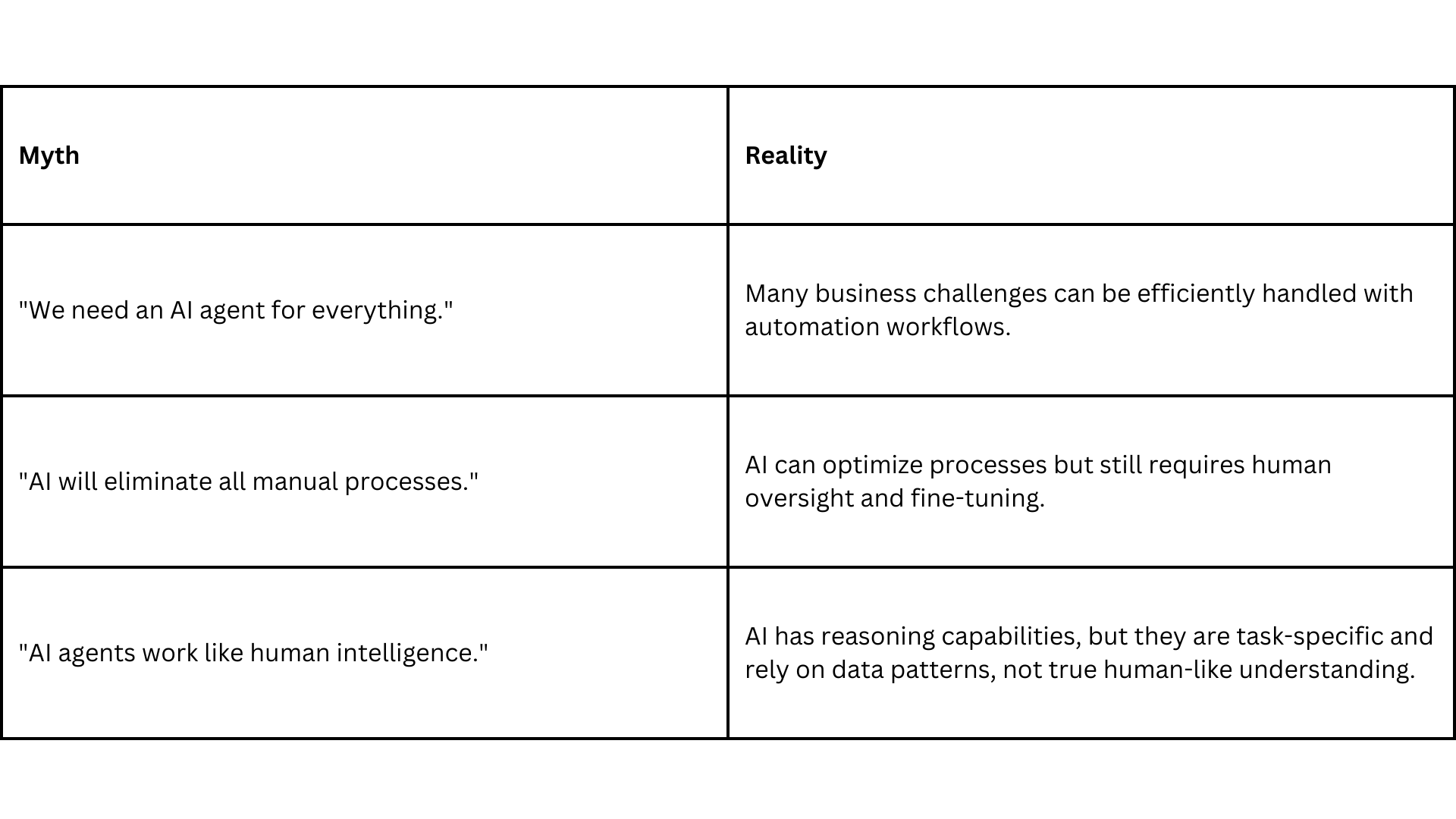
However, as of 2025, it is highly recommended to consider a hybrid approach (most businesses do):
Start with automated workflows and introduce targeted AI solutions in high-impact areas.
Understanding AI’s Reasoning in 2025 - What's really possible
Let's be straight about what AI can and can't do right now:
1. Types of AI Thinking
- Rule-Following AI: Like a super-smart calculator
- Pattern-Learning AI: Learns from data, like recommendation systems
- Advanced AI (Latest Gen): Can actually reason through problems, but within limits
- Example: AI customer agents like Juno can figure out complex customer issues by connecting different pieces of information
2. Current Capabilities (As of 2025)
- Can handle multi-step problems
- Understands context really well
- Makes connections between different types of data
- Example: Can look at your sales data, weather patterns, and social media trends to predict demand
3. Real Limitations
- Still needs human oversight
- Can't make ethical decisions independently
- Doesn't have true creativity (yet)
- Works best when given clear boundaries
- Reactive, not proactive: AI can respond based on input but does not self-initiate complex reasoning like a human brain.
AI has reasoning capabilities, but they are limited to specific contexts and rely on data-driven correlations rather than true understanding. AI excels in task-specific logic but does not yet have general intelligence like a human.
Practical Implementation: Choosing the Right Approach
Let's make this super practical. Here's how to decide what you actually need:
1. Ask These Questions First:
- Is your problem repetitive and rule-based? → Start with automation
- Need something that learns and adapts? → Look at AI solutions
- Want both? → Consider a hybrid approach (most businesses do)
2. Look at Your Data
- Got lots of historical data? Great for AI
- Limited data? Start with automation and collect more
- Messy data? We can help clean it up
3. Consider Your Budget and Timeline
- Need quick results? Automation first
- Looking for long-term scalability? AI is worth the investment
- Limited budget? Start with targeted AI solutions in high-impact areas
4. Think About Integration
- What systems do you already have?
- How will this fit with your current workflows?
- What training will your team need?
What's Actually Working in 2025?
Look, the AI landscape has shifted dramatically since late 2023. Remember when everyone thought chatbots were the future? Well, they were partly right, but things have evolved way beyond that. Here's what's actually working right now:
1. Hybrid Solutions Are Winning
- Smart businesses aren't choosing between automation and AI anymore - they're using both
- Example: Local restaurants are crushing it with automated inventory systems backed by AI demand prediction
- Real numbers: Our clients typically see 40-45% reduction in waste using this approach
- The key? Let automation handle the routine stuff while AI tackles the thinking parts
2. The New Generation of AI Agents (2024-25 Models)
- These aren't your older brother's chatbots
- They can handle complex conversations across multiple channels
- They actually understand context (finally!)
- One AI agent now does the work of what used to need 3-4 different tools
- They're learning continuously from every interaction
3. Industry-Specific Solutions
- Need quick results? Automation first
- Looking for long-term scalability? AI is worth the investment
- Limited budget? Start with targeted AI solutions in high-impact areas
4. Think About Integration
- What systems do you already have?
- How will this fit with your current workflows?
- What training will your team need?
Quick Wins You Can Implement Today
Here's the good stuff - things you can do right now that won't break the bank or take forever to implement:
1. Customer Service Quick Win (24-hour implementation)
- Deploy an AI agent for after-hours support
- Start with your top 20 FAQs
- Let it handle basic inquiries while learning from each interaction
- Real result: Average 30% reduction in response time in the first week
- Bonus: Your regular team can focus on complex issues
2. Sales Process Quick Win (48-hour implementation)
- Set up automated lead scoring with AI enhancement
- Let AI handle initial prospect conversations
- Use AI to identify your most promising leads
- Real result: 25% more qualified leads within first month
- Extra benefit: Sales team stops wasting time on dead-end leads
3. Operations Quick Win (1-week implementation)
- Implement AI-powered scheduling and resource allocation
- Start with one department as a test case
- Let AI optimize your resource usage
- Real result: 20% improvement in resource utilization
- Side effect: Happier employees due to better workload distribution
4. Think About Integration
- What systems do you already have?
- How will this fit with your current workflows?
- What training will your team need?
Getting Started: No-Nonsense Next Steps
Let's cut through the complexity and get you started with what actually works. Here's your roadmap:
- Start Small, Think Big
- Pick one process that's giving you headaches
- We'll help analyze if it needs automation, AI, or both
- Implementation can start within a week
- Example: Start with customer inquiry handling - it's usually the easiest win
2. Measure Everything (But Keep It Simple)
- Focus on metrics that matter to your bottom line
- We'll help set up proper tracking
- Monitor both financial and operational impacts
- Pro tip: Start with baseline measurements before implementing anything
3. Scale Smart
- Once you see results, expand strategically
- Add features based on actual business needs
- Keep ROI positive at every step
- We'll help you identify the next best area to tackle
Common Pitfalls to Avoid (Learned from 2024)
Let's cut through the complexity and get you started with what actually works. Here's your roadmap:
- Don't Try to Boil the Ocean
- We've seen companies try to AI-everything at once
- It doesn't work
- Start with one process, nail it, then move on
2. Avoid the Shiny Object Syndrome
- Not every new AI feature is worth implementing
- Focus on business impact, not cool factor
- If it doesn't solve a real problem, skip it
3. Don't Forget the Human Element
- AI works best alongside humans, not replacing them
- Train your team to work with AI tools
- Keep the human touch where it matters most
What Sets AI Agents like Juno Apart in 2025
Look, there are lots of AI solutions out there. Here's why Juno is different:
- Built for Real Businesses
- Designed for practical, everyday business needs
- No PhD required to operate
- Actually works out of the box
2. Learns Your Business
- Adapts to your specific industry and needs
- Gets smarter with every interaction
- Maintains your brand voice and values
3. Proven ROI
- Typical payback period: 2-3 months
- Clear metrics and reporting
- Continuous optimization
The Bottom Line
Here's the truth about AI in 2025: It's not about replacing humans or completely transforming your business overnight. It's about finding the right mix of automation and intelligence to make your business run better.
At BizGrowthEngines, we're seeing small and medium-sized businesses achieve amazing results with the right approach. Our Juno AI agent is specifically designed for businesses that want to start seeing results quickly without getting lost in technical complexity.
Think of it this way: Five years ago, having a website was optional. Three years ago, having a social media presence was optional. Today, having AI capabilities isn't optional anymore - it's about how smartly you implement it.
Ready to Get Started?
We offer a no-pressure, 30-minute consultation where we'll:
- Analyze your specific situation
- Show you exactly what's possible
- Give you a clear roadmap
- Share relevant case studies from your industry
No jargon, no hard sell - just practical solutions that work.
Take the Next Step:
- Book an Appointment
- Call: 647-699-2570
- Email: hello@bizgrowthengines.com
Remember: The best time to start was yesterday. The second best time is today. Let's make your business AI-ready for 2025 and beyond.
Meet Juno
Your Next Employee
24/7 Smart AI Assistant
Effortless. Smart. Game-Changing.
Custom-Built for Your Business.
Let Juno handle the routine phone calls, texts, appointment bookings & customer inquiries.
The Smart Hustle Journal
Your Growth Partner
Meet Joe Roy
Hi, I’m the founder of BizGrowthEngines. With a decade of experience in AI, automation, and growth systems, I’ve helped businesses across industries streamline their operations and thrive in competitive markets. My team and I are passionate about bringing big-business solutions to small businesses like yours.
Career Highlights:
- 15+ Years of Experience in Technology; Master of Engineering (Innovation), Master of Computer Applications.
- Expertise in Software Product Management and Marketing: I’ve spent years working with teams to design, launch, and scale user-centric products that drive business success, combining my knowledge of both product strategy and market needs.
- AI and Automation Leadership: Led automation projects for telecom, media, e-commerce, and finance industries, saving millions in operational costs, improving efficiency, and driving significant business growth.
- Proven Impact on Fortune 500 Companies: Built and implemented AI-powered recommendation engines, AI Agents & Chatbots, delivering personalized experiences that improve customer engagement and loyalty.
- A History of Delivering Scalable Solutions: From small businesses to large enterprises, I’ve successfully translated complex technological solutions into actionable strategies that help businesses scale and stay competitive.
I believe that every small business deserves the same growth opportunities as the big players. That’s why I created BizGrowthEngines—to bridge that gap with scalable, cost-effective automation solutions that make life easier for business owners.
Want more information?

Engineered for Growth
Designed for Success
Career
Serving Regions:
- Proudly serving businesses across
- United States
- Canada.
- Expertise in delivering tailored marketing systems & solutions for North American Small Businesses.
- Location: Toronto, Canada
Need help? Reach us at:
- admin@bizgrowthengines.com
- CALL | TEXT: +1 647-699-2570
- 24/7 Live Demo (Juno): 647-557-2289
- Available
- Monday–Friday: 9 AM–7.30 PM EST
- Saturday: Closed
- Sunday: 10.30 - 4 PM EST
BizGrowthEngines | All Rights Reserved

